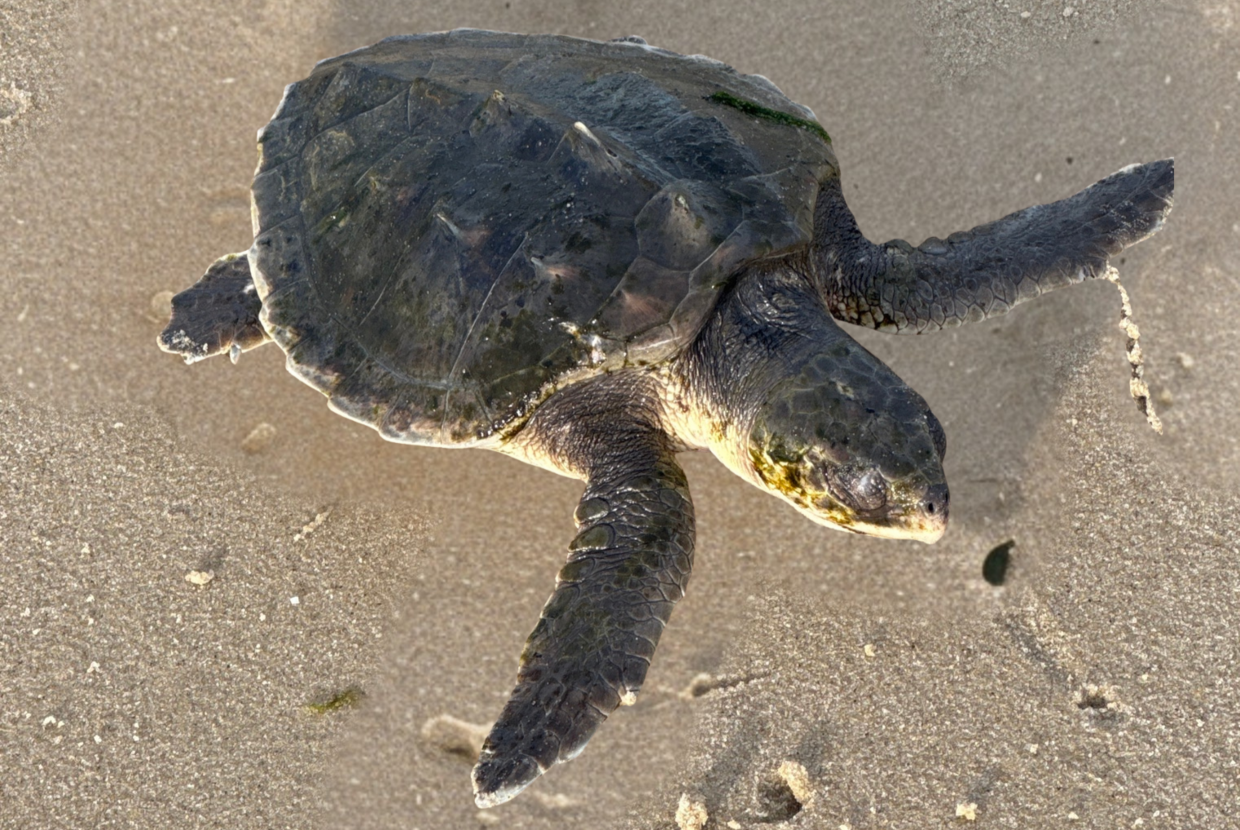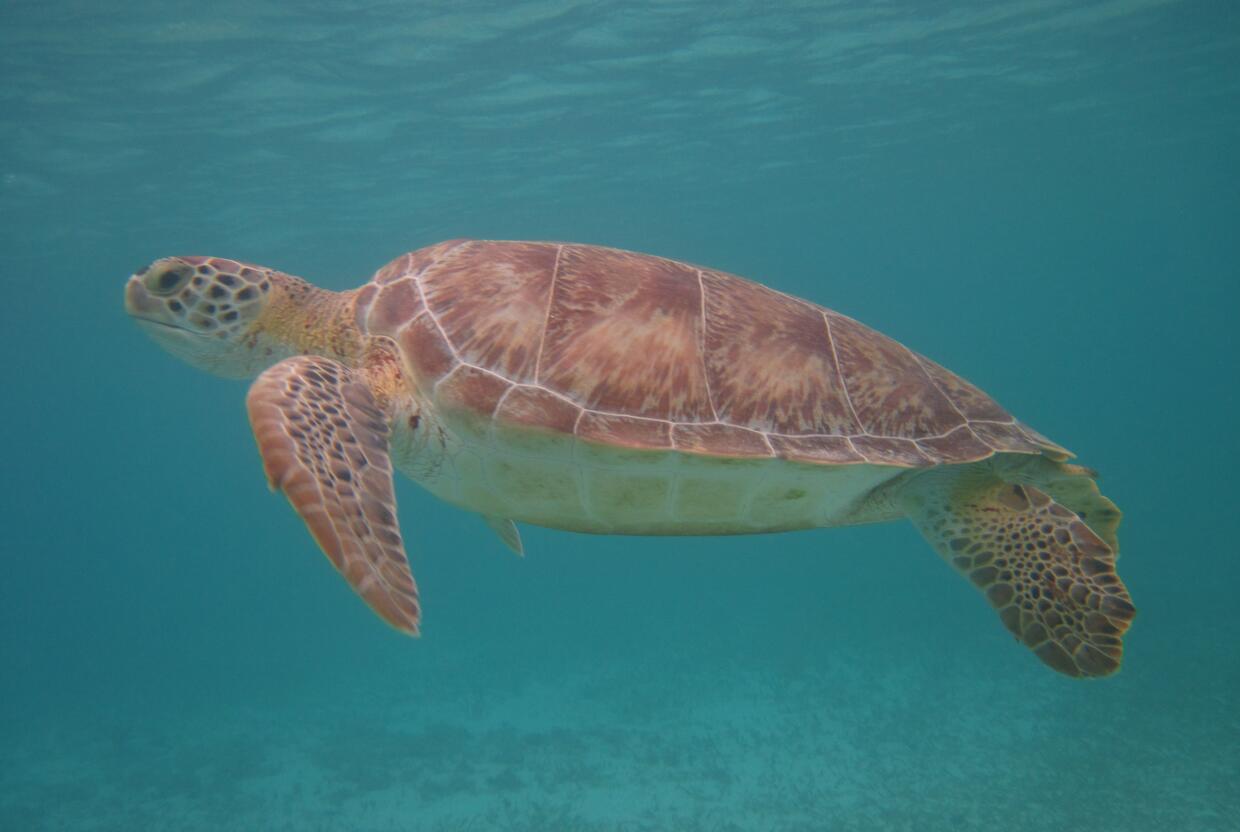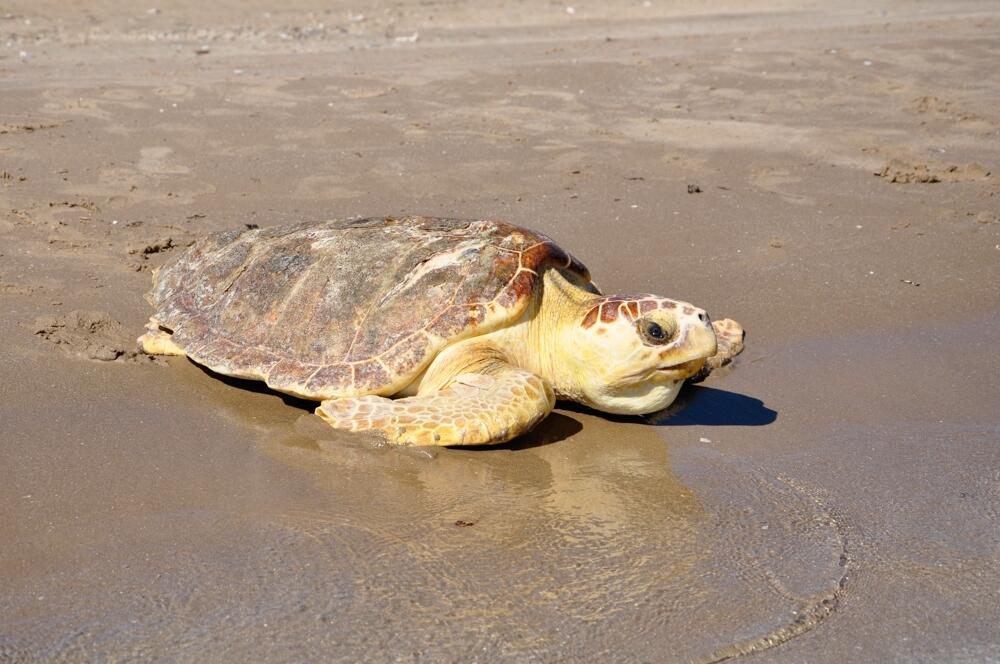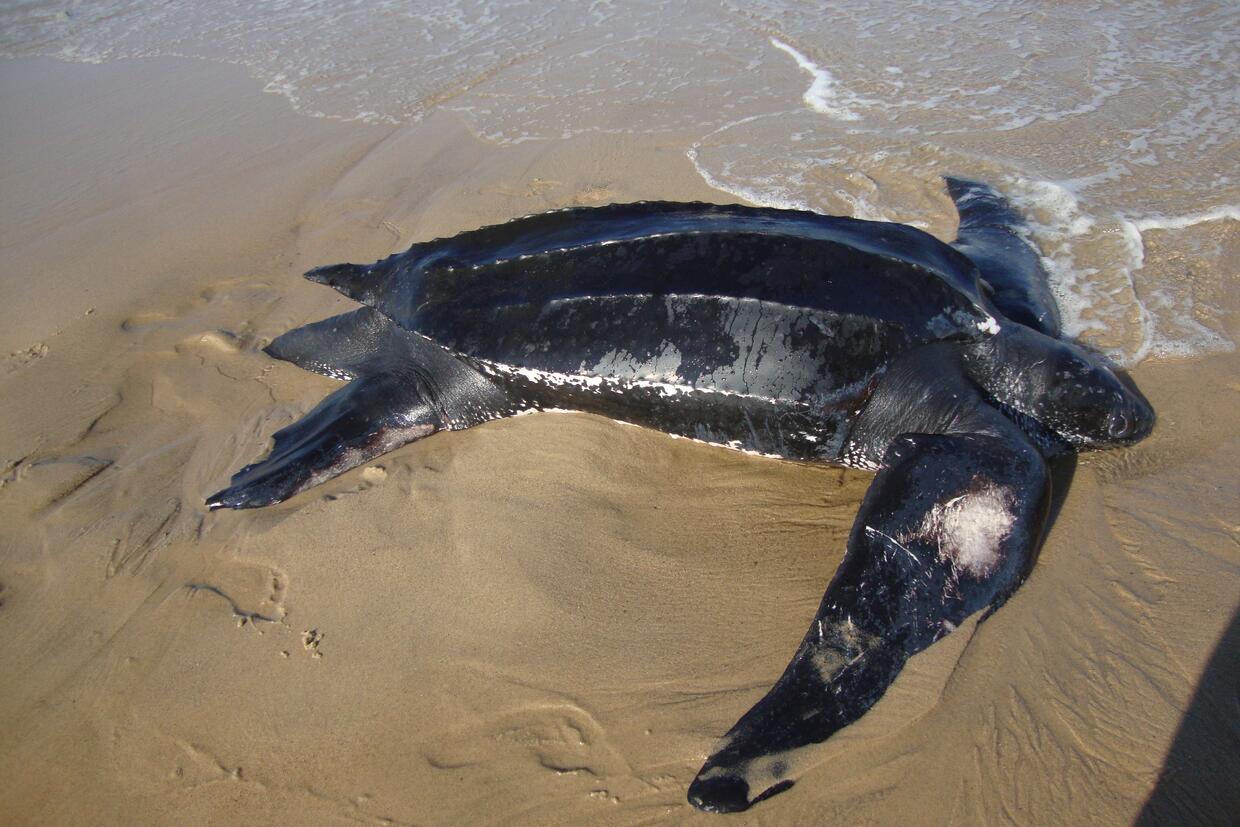The bays that define the coastline of Massachusetts as well as the surrounding open waters are home to a few species of marine turtles. Deepen your appreciation for these underwater neighbors by learning to identify the turtles you could see on your next sea adventure. All marine turtles are state listed as threatened or endangered, therefore making it very important to notify the correct organizations if they have been observed.
Learn more each species, the best way to report an observation, and what to do if you believe a turtle needs help below.
Report a sighting
If you see a marine turtle, make sure you report it! Please share your observation on Sea Turtle Sightings and iNaturalist. Your reports provide critical information that informs future habitat management and wildlife conservation for future generations.
Marine turtles
Kemp's ridley sea turtle (endangered)
Green sea turtle (threatened)
Loggerhead sea turtle (threatened)
Leatherback sea turtle (endangered)
Common human-marine turtle interactions
Pollution
Marine turtles often ingest plastic due to the look, smell, and it's presence on the ocean floor. Plastics can block their digestive system, causing the turtles to not eat, become sick, and potentially die. Although plastic pollution is a global issue, it is important to pick up litter and to always leave no trace when exploring Massachusetts coastlines and marine waters.
Boats and turtles
Collisions with vessels as small as jet skis to as big as cruise ships can cause severe injuries or death to marine turtles. Turtles come to the water surface to breath and bask, making them vulnerable to vessel strikes that are accidental or are impossible to avoid. As a boater, it is important to watch your speed in areas of known turtle occurrences, keep a sharp look out, and keep your distance if a turtle is sighted to reduce the amount of collisions that occur in the area.
Turtle entanglement
Marine turtles, especially leatherback sea turtles, can become entangled in fishing and trapping gear, leading to drowning or serious injury. The Massachusetts Division of Marine Fisheries (DMF) has helped create and fund a marine turtle disentanglement program which responds to about 10–20 entangled leatherback sea turtles every year. Many of these turtles can be saved by a rapid response, but some are already dead when found or die despite efforts to save them. NOAA has developed regulations designed to protect leatherback turtles, including gear modifications to prevent entanglement, changes in fishing practices, and time/area closures for some gear types. DMF has also put in efforts to clean up derelict fishing gear and encourages the marine fishing industry to use modern gear that reduces the risk of entanglement.
Cold-stunned turtles
Hundreds of sea turtles summer in Cape Cod waters annually. For the past few decades, more and more turtles have been found stranded on beaches from Plymouth all the way to Provincetown, with most of them found around Wellfleet. Cold-stunned strandings can start as early as the end of October until January of the next year. This phenomenon occurs when the body of water that the turtles are in drop to a temperature too quickly for the turtles to adjust and swim south.
If you find a sea turtle on a shoreline, do not assume it is dead and do not put it back into the water. By grabbing only their shell, carefully move the turtle above the high tide line and cover it completely with seaweed or wrack (not sand!). Make its location with a piece of debris or drawing in the sand and call the Wellfleet Bay hotline at 508-349-2615 to receive further instructions.



